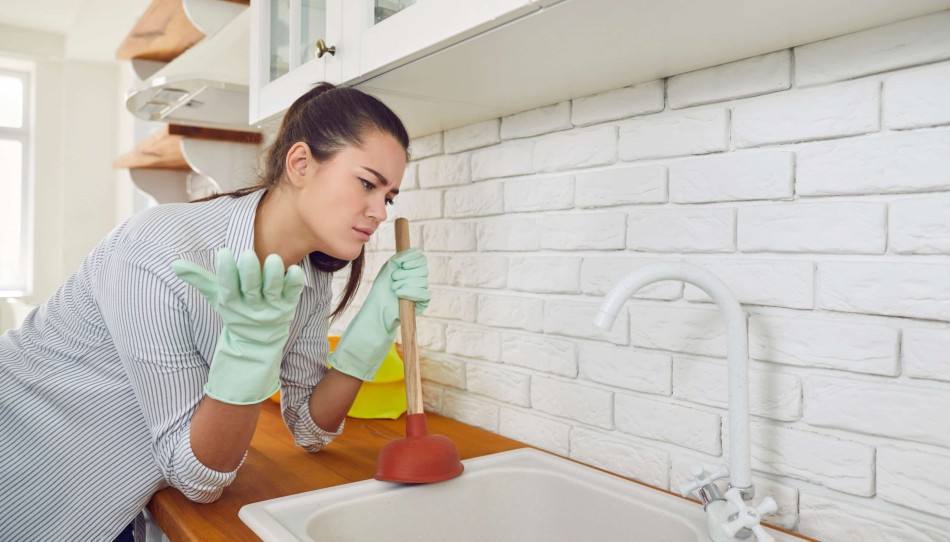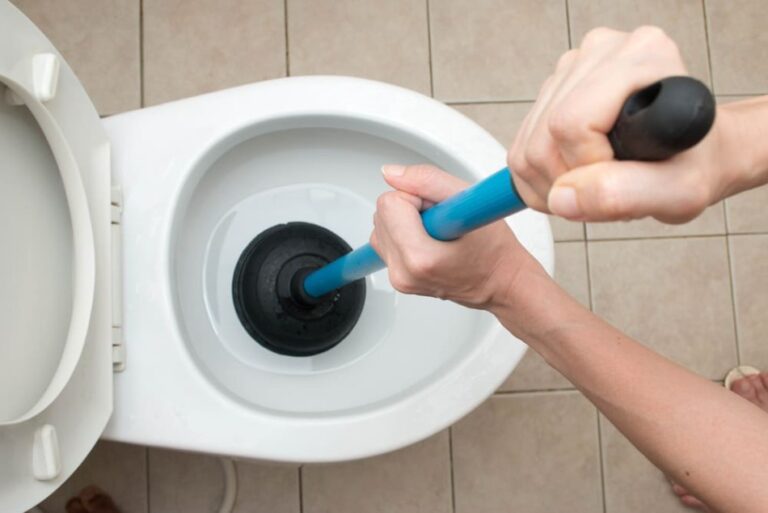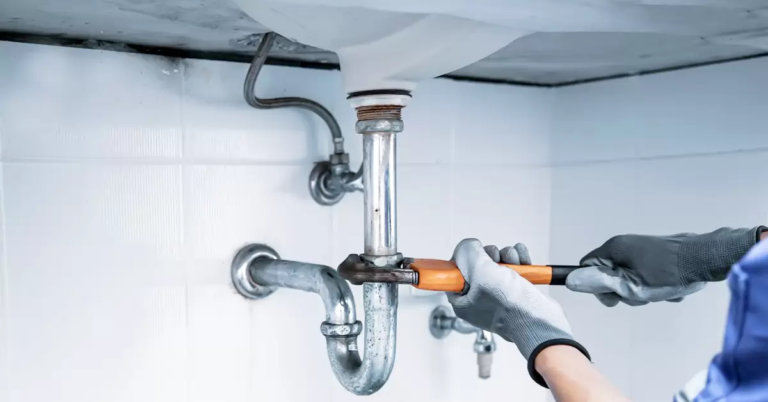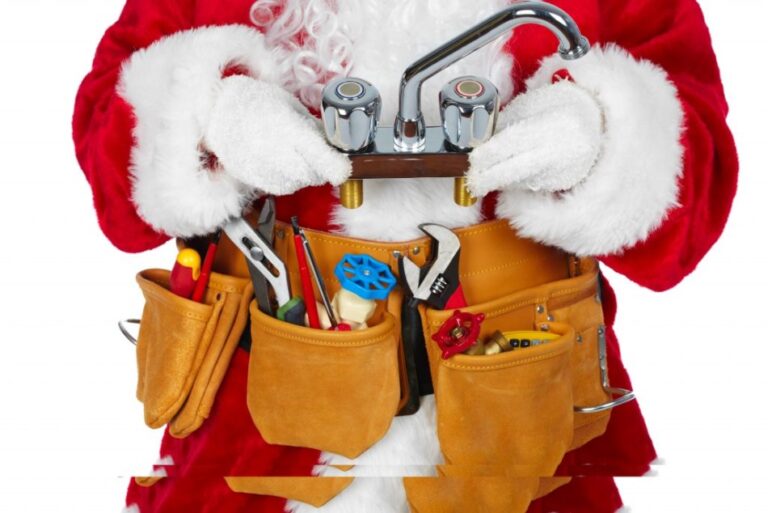You might see a slow drain as a minor inconvenience, but when water lingers longer than it should, it’s often trying to tell you something important. Whether it’s a buildup of debris in the pipes or a more serious issue further down, slow drainage is typically a sign of trouble.
At Onlineplumber, we’ve witnessed how neglecting these early warnings can lead to costly, messy repairs. Before brushing it off as a random occurrence, it’s a good idea to understand what your drain might be signaling. Read on for insights from our expert team.
Slow Drains Can Disrupt Your Daily Life
At first glance, you may not realize how troublesome a slow drain can be. Maybe the water takes a little longer to go down after your shower, or your kitchen sink doesn’t clear out as quickly as it should. You try a bit of hot water or reach for the plunger, but the issue keeps returning. That’s when slow drains become more than just a minor annoyance.
They chip away at your daily routine. Instead of focusing on dinner or getting ready to leave, you find yourself battling a stubborn sink. When something small starts hindering simple tasks, it quickly evolves into a larger concern that impacts your entire day.
Recurring Slow Drains Could Signal Deeper Blockages
If you’ve cleared a drain and it clogs again shortly thereafter, consider it a red flag that something deeper in the pipes may be obstructing the flow. Food scraps, hair, soap, and grease can accumulate far from the drain opening, particularly in bends or junctions of pipes. This accumulation creates a surface that catches more debris, leading to a gradual narrowing of the pipe.
While you may not see the clog, you’ll definitely feel it. Water drains more slowly, and you might notice unusual sounds during the process. Gurgling, bubbling, or even suction noises often indicate trapped air trying to escape around an obstruction. While there might not be any unpleasant smells, that doesn’t mean the blockage is harmless. Organic matter attracts bacteria, which can disrupt your plumbing system. This isn’t something you can resolve with a store-bought cleaner; it requires professional attention.
Gunky Buildup Can Create Pressure Issues in Your Pipes
Clogs can lead to changes in how water flows, especially around a blockage. If pressure builds up behind a partial clog, it can put a strain on your pipes. Older plumbing, especially those with thin walls or pre-existing weaknesses, may struggle to withstand that added pressure. Even plastic pipes can experience warping when stressed. Keep an eye out for tiny leaks around joints or unexpected damp patches under the sink that weren’t there before.
If you’re noticing uneven water pressure, it could mean that a clog is disrupting the normal flow. This backup can cause water to surge in fits, which may rattle your pipes or put stress on hidden water lines. As the pressure fluctuates, other parts of your plumbing will likely feel the effects too.
Unpleasant Drain Odors Could Follow Sluggish Water Flow
When water flow slows down, leftover residue tends to accumulate. Materials like food scraps, grease, soap residue, and hair can get stuck in the pipes, making them harder to wash away. This buildup often results in musty or sour odors that linger around the sink or tub—especially noticeable in the morning or after the water hasn’t been used for a while. Gases from the decaying material can collect in the drain, and once the water starts moving again, those smells rise into your living space. Using air fresheners will only provide a temporary fix. If the odor returns after a rinse or flush, it indicates deeper buildup in the pipes. Ignoring the smell just gives time for the material to rot further and attract pests.
A Single Slow Drain Can Indicate Broader Issues
A slow drain in one area doesn’t always remain isolated. Plumbing systems are interconnected in ways that may not be immediately apparent. For instance, a clog in the bathroom sink can eventually impact the shower drain, and a problem in the kitchen might affect the laundry room. When water struggles to move through the main drainage system, it will back up wherever there’s less resistance. This could explain why you see bubbles in the tub when you flush the toilet or find standing water in the sink while running the dishwasher.
Ignoring early signs can lead to a widespread issue, causing slow drains throughout the house. Addressing problems promptly makes it easier to prevent a complete shutdown.
Pooling Water May Attract Unwanted Pests
When drains slow down and water begins to pool, it creates a damp environment that pests thrive in. Fruit flies, drain flies, and gnats love the moist, organic buildup. You may first notice them near the sink or tub, swarming or landing nearby. These pests feed on the very materials that clog your drains. An uptick in flying insects around your sinks and showers often points to the drain as their source.
Moisture can also draw in larger pests like cockroaches and ants, which may enter through small openings in your pipes or gaps around plumbing fixtures. They’re drawn to the scent and settle where moisture is consistent. Improving your drainage not only keeps your plumbing system cleaner but also helps deter those unwanted visitors.
Ignoring Drain Issues Can Hurt Your Flooring and Cabinets
Water that drains slowly can linger longer than you realize, particularly beneath sinks or at the edges of tubs. That added moisture doesn’t just remain in the pipes; it might gather around seals, seep past old caulking, or gradually infiltrate the cabinet base. Materials like wood and laminate absorb moisture quickly, leading to warping as they swell. You might open up the cabinet under your bathroom sink and spot a soft area or catch a musty smell.
If left unchecked, that small issue can grow, especially if the water penetrates the back wall or baseboards. Floors near your shower or kitchen sink might also show signs of discoloration or feel spongy underfoot. It’s important to note that water damage from a persistent drain problem is often not covered by insurance if you were aware of the issue and chose not to act.
Plungers and Chemicals Don’t Always Address the Underlying Problem
Many people start with the usual remedies: a plunger, hot water, or a commercial drain cleaner might seem like the best way to tackle the issue. While these methods can sometimes be effective, if the problem keeps recurring, they’re likely not addressing the underlying cause. Chemicals may soften or shift the clog just enough to get the water flowing again but fail to eliminate the buildup that clings to the pipe walls.
Even worse, harsh chemical products can damage older plumbing or react with existing residues, leading to corrosion and uneven pipe interiors that cause clogs to return more quickly. Using a plunger can be effective if the clog is near the drain opening, but anything further down requires a different strategy. If you find yourself going through the same routine week after week, it’s a sign that you need a more thorough solution for your plumbing.




